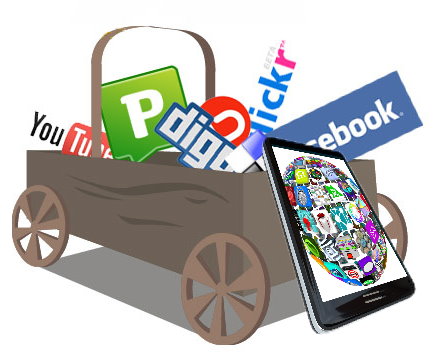 There has hardly been a report on future developments in e-commerce this year that didn’t propagate social media and mobile commerce as "the next big thing", giving dealers the impression that their sales would fall into a bottomless abyss, if they don’t take full advantage of these new trends in their online marketing strategies. But is that really true?
There has hardly been a report on future developments in e-commerce this year that didn’t propagate social media and mobile commerce as "the next big thing", giving dealers the impression that their sales would fall into a bottomless abyss, if they don’t take full advantage of these new trends in their online marketing strategies. But is that really true?
Dialogues but no sales
Fact is that online advertising is nowadays primarily used for sales marketing, which means the visitors to a website are being courted with the aim to generate direct online sales. However, various studies show that the conversion rates from advertising placements in the social media environment are much lower than from all previous channels.
This has mainly to do with the intention of an Internet user: those who are online in a social network usually want to communicate with friends, thus, advertisements are not of interest and CTR rates are low. Consequently, it is even more difficult to lure social media users from their "social living room" into a shop. The big question which arises is “why are companies investing so much money and effort into social”? Why do investments steadily increase, while the output in the form of sales conversions and revenue generated remains low and can’t stand up to a ROI analysis?
Hype without profits
A closer look at social media indicates that a comparison with the Internet hype in the late 90s is probably appropriate. Back then, there was a run on the Internet and a hype that can be compared to the social media excitement these days. Everyone wanted to join the trend and profit from it - until the bubble burst.
A lot has happened with online marketing since then, investments were better planned and controlled, and sustainable results could be achieved. There are no doubts anymore that the Internet - as an information source and distribution channel - is here to stay, with social media as the No. 1 topic everybody is talking about.
The same kind of fear - to miss a hip trend - is extensively nurtured nowadays and comparable to the booster phase of the Internet. What comes here to my mind is immediately the Hokkien word “Kiasu” that literally means “fear of losing”, an attitude that is widespread in Asia and especially in Singapore, where it is most important not to lose out in a highly competitive society. But watch out, it is nevertheless important to plan carefully and to consider your investment well - especially with the objectives you want to achieve.
A powerful social media strategy is a useful measure for a sophisticated customer dialogue and effective brand marketing that certainly contributes indirectly to success. Further, it can be said that referral marketing through social media works well and generates both short-term and long-term traffic to your own website: short-term directly through recommendations in the network and long-term on the search engine rankings of your site.
But regarding the sales marketing and increasing sales, e-commerce merchants should not get fooled by the extensive hype, as their advertising displays on other websites would most probably achieve higher ROI.
M-commerce not popular enough, yet
Although more and more people have smartphones, only few actually use it so far for shopping, so there is no need for hectic activism regarding mobile commerce. Mobile devices are used more for research, finding information or comparing prices.
Right now large full-line providers, that want to address their regular customers at the POS via mobile applications, are primarily benefitting from mobile commerce. For smaller shops an investment in mobile isn’t really worthwhile, yet.
Another important issue is that the hype around mobile marketing is almost always based on wrong metrics, as tablets are counted as mobile devices with regard to mCommerce. Tablet PCs, however, like the iPad and others, rather change domestic usage and are hardly used for mobile shopping while on the go. While desktop PCs or notebooks have traditionally been used for surfing and shopping on the Internet at home, nowadays, there is a shift towards tablets. Therefore, combining smartphones and tablets in surveys on mobile marketing falsifies the key figures significantly and represents the mobile market as more attractive than it actually is.
It definitely makes sense to put an emphasis on social media as a tool for dialogue and brand marketing, and without doubt mobile marketing is a good choice for certain vendors. However, those who want to increase sales with online advertising, shouldn’t comply too much with the social and mCommerce hype in 2013, but should continue to rely mostly on proven online marketing tools.
Actually it looks as if the word has already spread. While more than three-quarters anticipated growing budgets in social media last year, currently only 56 percent of advertising companies assume growing social media budgets, according to a social media survey by BVDW.
By Daniela la Marca


